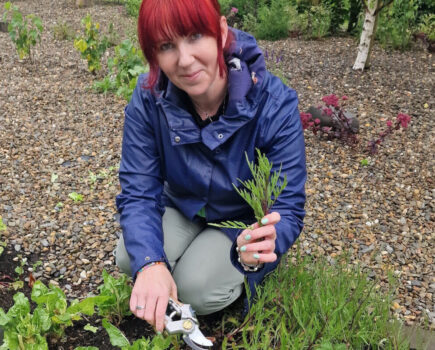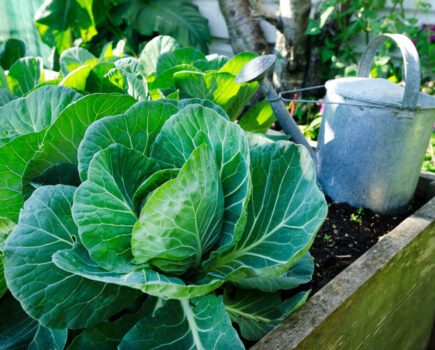Chris Collins shares advice for growing alpines in a small garden
Alpines are some of the most beautiful flora a gardener can grow. This group of plants thrive naturally in some of the most challenging conditions, often at high altitude, in poor soil and with extremes of hot and cold. Small in stature, but tough in nature and adapted physiology, they’re perfect for small-space balconies, back gardens and rooftops.
These beautiful plants can create mini landscapes, and one of the more traditional methods is in a sink garden. Enamel sinks are easily bought online or picked up at recycling centres, minus the plug. They can be transformed by a simple ‘hypertufa’ mixture of three parts each of cement, peat-free compost and sharp sand. If you’re not keen on using cement then there are plenty of eco-friendly substitutes such as Hempcrete and Ashcrete.
Use a paint brush to coat the sink with some PVA glue. Once dried this provides a ridged surface for your ‘hypertufa’ to stick to. Mix up your compost, sand and cement in a large bucket with some water and apply to the surface by hand, making sure you’re wearing gloves. Once dried, the sink is transformed into an authentic looking stone sink. For an extra touch, add a little seaweed extract to the mix to encourage lichens to colonise.

The one thing alpines hate is wet feet, so sharp, efficient drainage is essential. For your substrate, mix a decent peat-free compost with 30% horticultural gravel. A top dress of gravel will also help keep any moisture away from the leaves, a big no-no for alpines. Add small rocks to enhance the mountain scree bed effect.
If a sink garden is not for you, an upright recycled pallet, lined and fixed to a wall can also provide a decent setting for alpines. Or try a large trough with slate or discarded broken paving slabs, half buried on their sides and slightly apart, to create crevices that alpines will thrive in.
A space as small as 1m squared (3ftx3ft) will accommodate an alpine garden. They take little maintenance and provide the perfect solution for busy gardeners. My last tip is to look closely at any alpines you grow. Each flower has incredible detail that can go unnoticed without proper inspection.

Small Space Q&A
Q. I’m new to growing alpines, what would you recommend?
A. If you’re just starting out, stick to the tougher characters such as saxifrages (that often produce stunning flowers), creeping thyme, sedums, dianthus, campanulas and elegant pasqueflower (Pulsatilla).
Q. What are the best rockery plants for bees?
A. There’s lots of lovely alpines for bees. My favourites include sea pink (Armenia maritima), bugle (Ajuga reptans), rock rose (Helianthemum sp), Mexican fleabane (Erigeron karvinskianus), aubrieta, campanula and speedwell (Veronica prostrata).
Q. I have an old kitchen sink – can I grow vegetables in it?
A. A sink like this would be good for microgreens, particularly if it’s in semi-shade, and they’d also appreciate a sheltered balcony. Try pea shoots, or baby lettuce and spinach, or opt for smaller herbs such as creeping thyme, coriander and basil.

Find more tips, advice and articles like this at the Amateur Gardening website. Subscribe to Amateur Gardening magazine now





